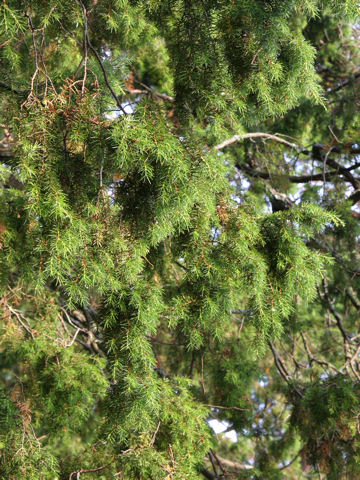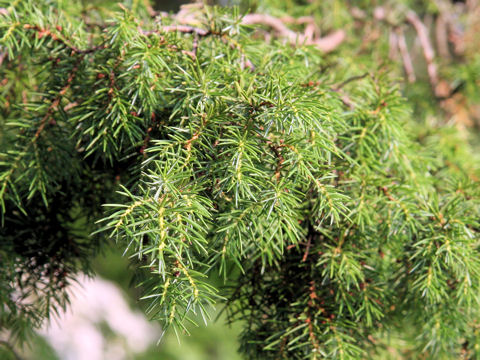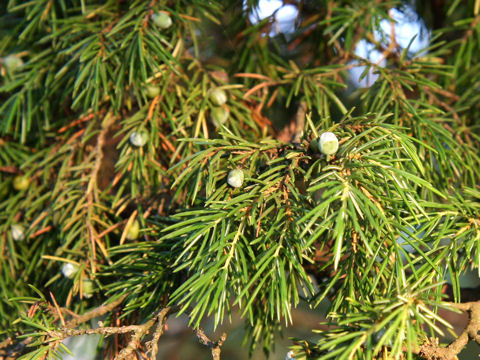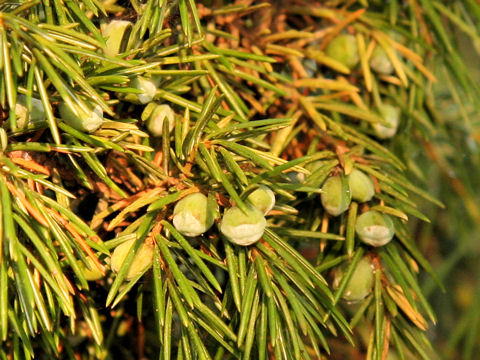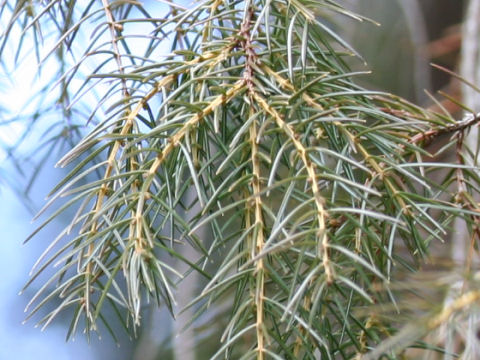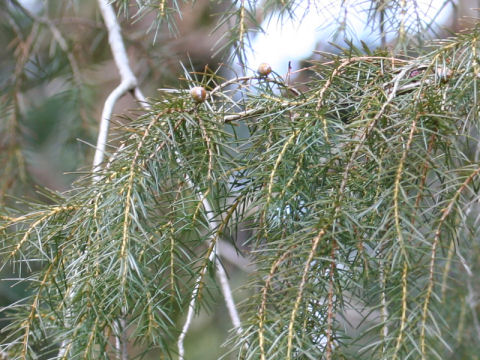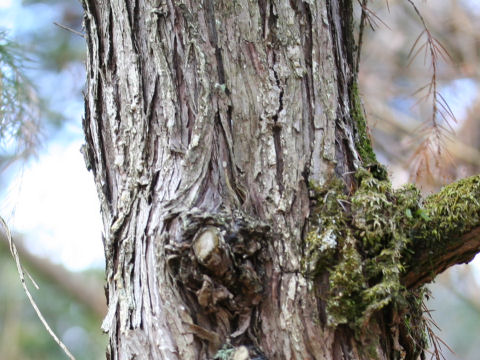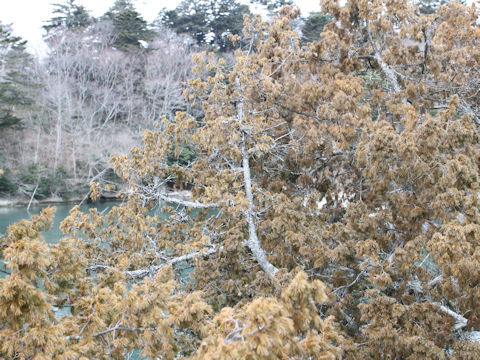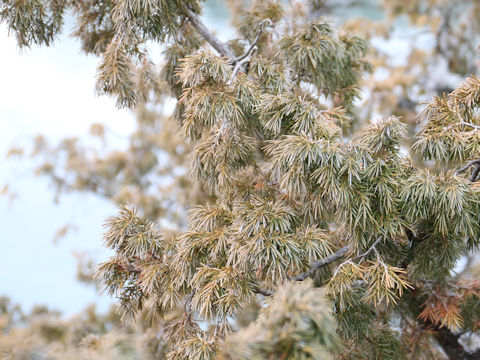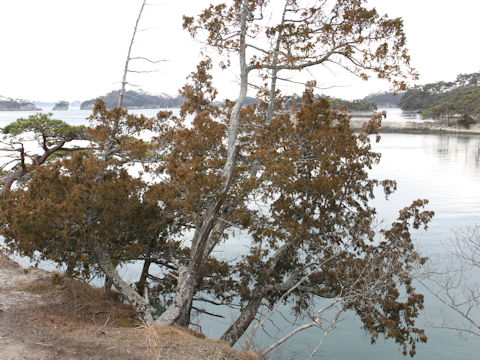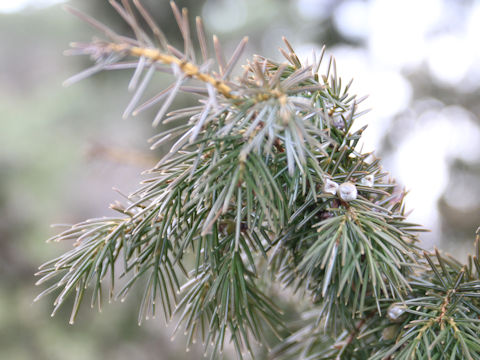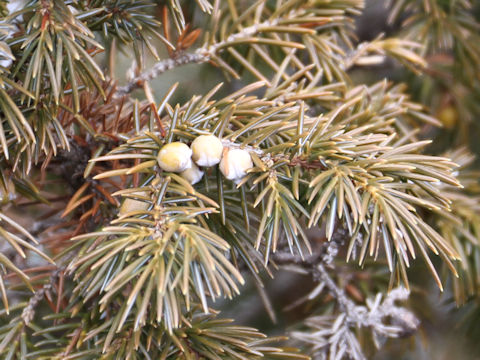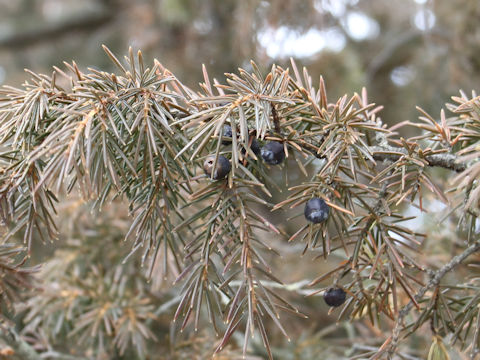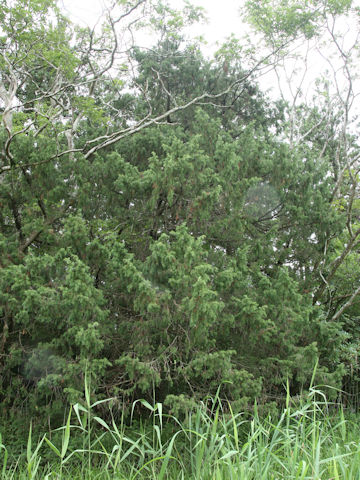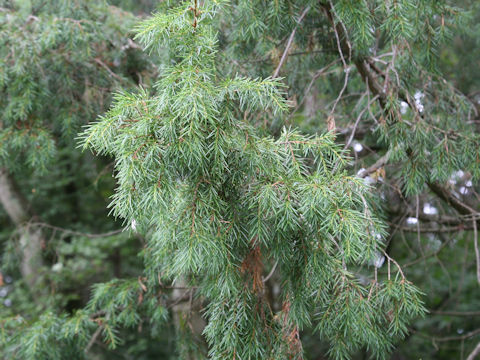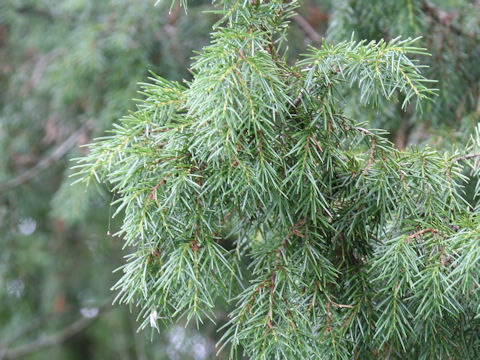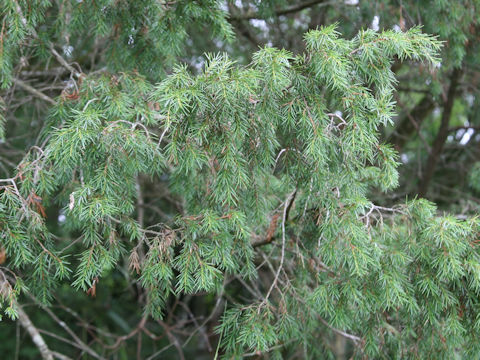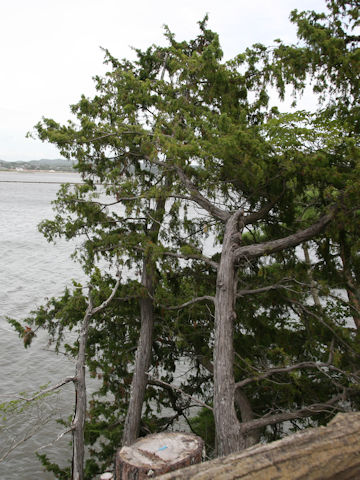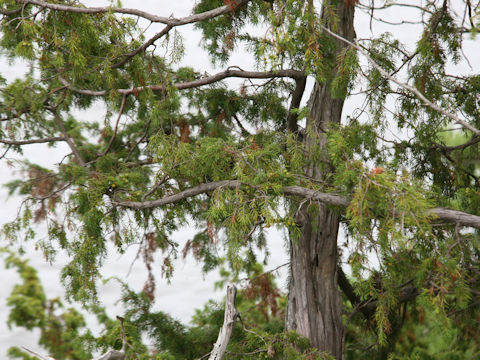
|
|
|
|
−− もっと見る(Show more)−−
−− 閉じる(Close) −−
|
|
|
|
わが国の本州から四国・九州、それに朝鮮半島や中国北部に分布しています。丘陵から山地の尾根などの痩せ地に生え、高さは5〜10メートルになります。樹皮は赤みを帯びた灰褐色で、薄く剥離します。葉は針状で3輪生します。雌雄異株で、4月ごろ前年枝の葉腋に黄褐色の花を咲かせます。果実は球形で、翌年または翌々年の秋に熟します。和名は、枝をネズミの通り道に置いておくと嫌がるので、ネズミよけにしたことから。別名で、「ねず(杜松)」とも呼ばれます。中国語では「杜松(du song)」と呼ばれます。 |
|
|
ヒノキ科ネズミサシ属の常緑低木で、学名は Juniperus rigida。英名は Stiff-leaved juniper、Needle juniper。 |
|
|
The Stiff-leaved juniper (Juniperus rigida) belongs to Cupressaceae (the Cypress family). It is a small evergreen tree that is distributed in Honshu, Shikoku and Kyushu, as well as the Korean Peninsula and northern China. This tree grows in hill to mountain ridges, barrens and all, and can reach 5-10 m in height. The barks are reddish gray-brown and peel thinly. The leaves are needle-like and arranged three whorled. It is dioecious. The yellowish brown flowers appear at the axils of new branches around April. The fruits are globose and ripen next year's fall or two years later fall. Its Japanese name "Nezumi-sashi" comes from the fact that its branches are disliked by rats when placed in their path, so it was used to repel them. It is also known as "Nezu" in Japan. In Chinese, it is called "杜松" (du song). |
|
|
[上・中1〜3] 宮城県松島町「雄島」にて、2010年08月08日撮影。 [中4〜中6] 京都市左京区「京都府立植物園」にて、2006年02月17日撮影。 [中7〜中12] 宮城県利府町赤沼「馬の背」にて、2019年02月16日撮影。 [中13〜中16] 宮城県村田町「浮島の植物群落」にて、2024年08月22日撮影。 [中17〜18・下] 宮城県松島町「福浦島」にて、2024年08月27日撮影。 |

|
|
Shu Suehiro |
